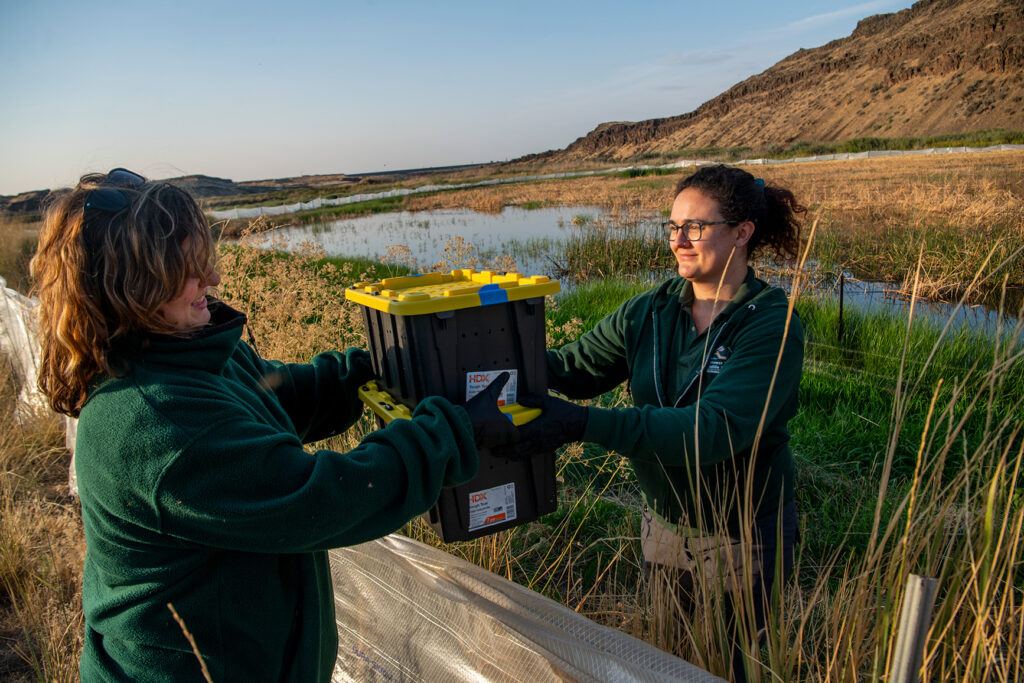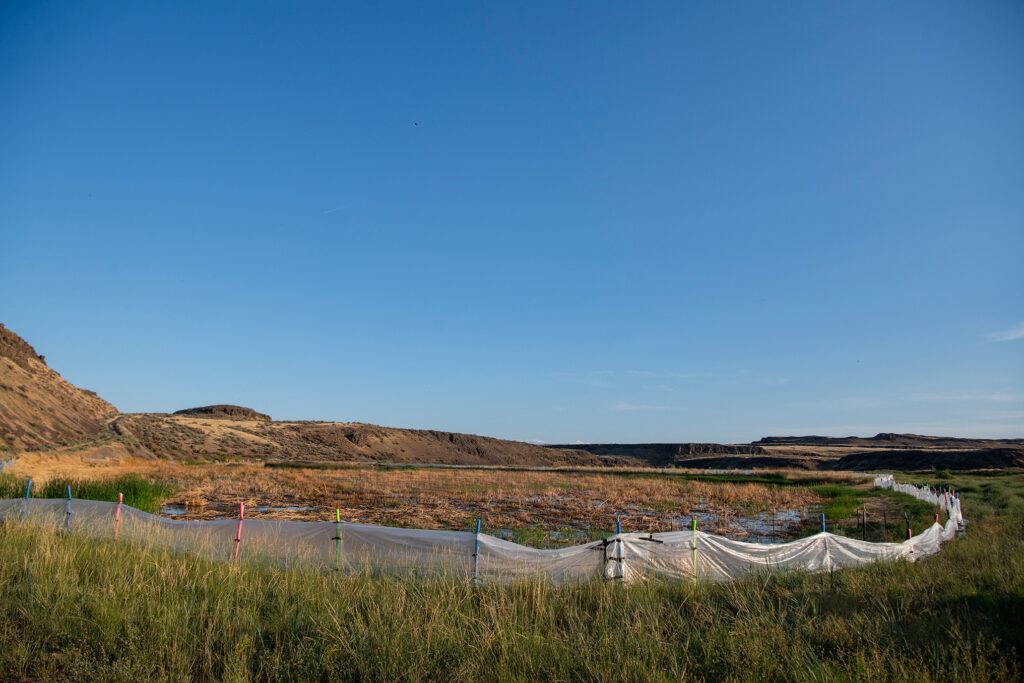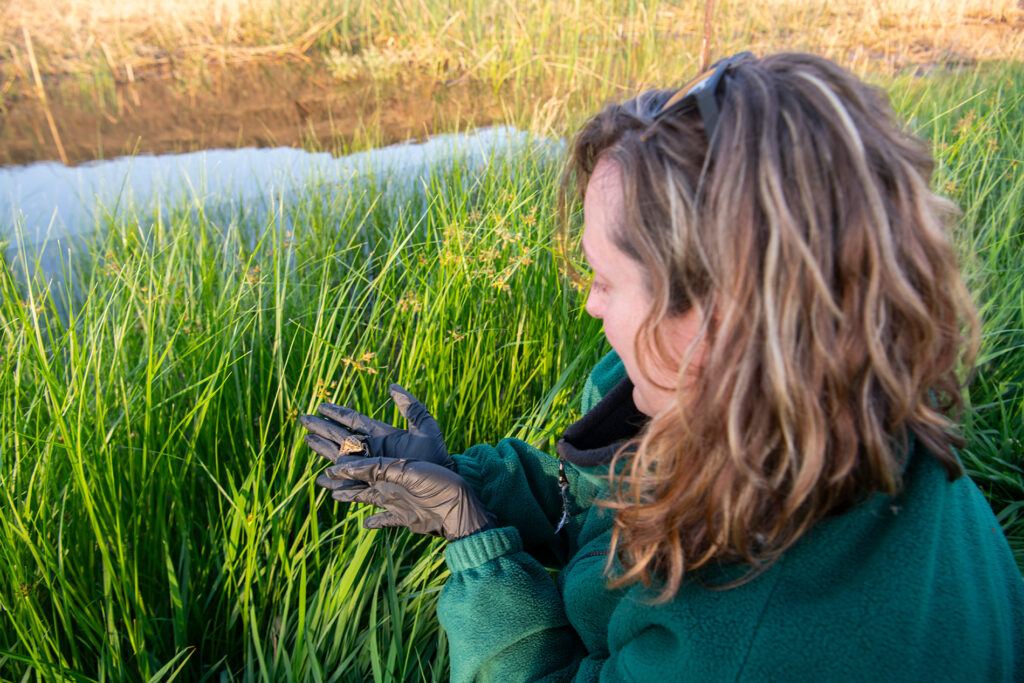Nearly 300 endangered northern leopard frogs raised at Northwest Trek Wildlife Park hopped back into the wild at the Columbia National Wildlife Refuge in Grant County at the end of August.
The releases are made possible by a partnership of the Washington Department of Fish and Wildlife (WDFW), U.S. Fish and Wildlife Service (USFWS), Northwest Trek Wildlife Park, Oregon Zoo, and Washington State University (WSU).
Since early spring, when WDFW collected northern leopard frog eggs, the frogs have grown from egg masses to tadpoles to froglets at Northwest Trek and Oregon Zoo, growing large enough to have a fighting chance in the wild.

“The frogs are raised in a controlled environment where keepers monitor everything from their water quality and temperature to the amount of food they receive,” said Northwest Trek Zoological Curator Marc Heinzman. “Giving these frogs a head start by raising them free of predators gives them a better chance of survival.”
Keepers prepare the frogs for life in the wild by giving them food like crickets to encourage their natural food-scavenging behaviors. Once the frogs are big enough, they’re taken to the Columbia National Wildlife Refuge ponds.

“It is exciting to watch them leap back into the wild and to be a part of this critical effort to save an endangered species here in Washington,” said Heinzman.
Once abundant throughout North America, northern leopard frogs rapidly disappeared from their native ranges in Washington, Oregon, and western Canada.
The species has been listed as endangered in Washington since 1999, and with only one known wild population remaining in the state, there is still a long path to recovery for the frogs. Likely causes of the frogs’ decline in the Pacific Northwest include habitat loss and degradation, disease, non-native species, and climate change.

“We are at a critical point for this species,” said Lindsay Nason, WDFW biologist. “We’re working to bypass those threats through critical growth stages and establish a new population of northern leopard frogs in the region.”
Funding for the northern leopard frog reintroduction is provided through a competitive state wildlife grant awarded to WDFW from USFWS’s Wildlife and Sport Fish Restoration program and Potholes Supplemental Feed Route mitigation funds provided by the Department of Ecology.